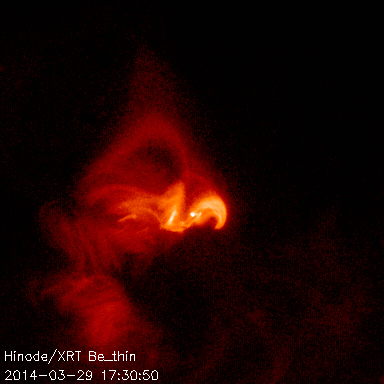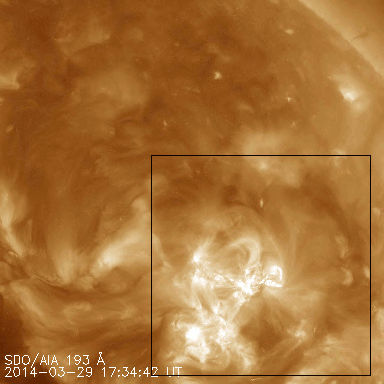

Click left GIF for MOV file and right GIF for full-res movie. Also available on YouTube.
X-Flare & EUV Wave on March 29th, 2014
|
On March 29th, active region 12017 produced an X1-class flare around 17:45 UT. The movie on the left shows XRT's observations of the event through the thin and later medium Beryllium filters, which are sensitive to plasma in excess of 10 million Kelvin. The relatively compact flare core seen in the XRT images outshines the surrounding region, driving down the camera exposures times to such a degree that only the core is visible. The movie on the right shows 193 Å images from the Atmospheric Imaging Assembly (AIA), and the black box denotes the XRT field-of-view. The flare core is completely saturated in the AIA images because AIA is sensitive to lower temperatures and, unlike XRT, the exposure times do not change throughout the event. This allows us to see the fainter surrounding material and the EUV wave to the north of the active region. EUV waves, often called EIT waves due to their discovery by the Extreme ultraviolet Imaging Telescope (EIT) aboard SOHO, are triggered by Coronal Mass Ejections (CMEs). Beyond being strongly associated with CMEs, the cause of EUV waves is still unclear. They may be "true waves" (i.e. fast-mode MHD shock waves), "pseudo waves" (i.e. compression fronts or reconnection fronts around the expanding CMEs), or perhaps most likely some combination of both. Keywords: Flare, EUV Wave, CME Filters: Be_thin, Be_med, AIA/193 |
(Prepared by Patrick McCauley)
| Back | Archive | Next |